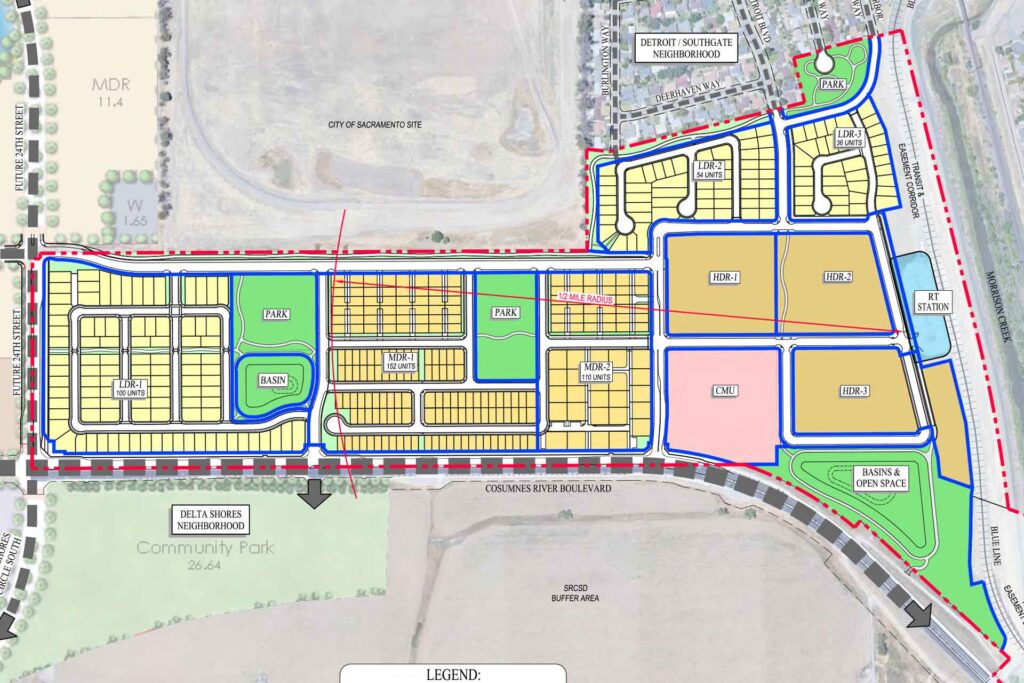If you’re a retailer – unless you’re among the rare breed of owner-operators or web-based retailers – your real estate lease agreement is critical. Beyond the “look” and location provided by your leased premises, a favorable lease agreement can form an important foundation for your business.
And perhaps more so, a poor lease agreement can lead to unexpected consequences that can cripple your business. In other words, it’s worth the time and effort necessary to negotiate a favorable deal with your landlord-to-be before putting ink to paper – or perhaps, nowadays, electronic signature to portable document file.
When it comes to handling California retail lease negotiations in 2020, consider these five hidden issues to help you get the best result for your business.
1. Property taxes: Preparing for the “split roll”
Though 2020 may see the dawn of a “split tax roll” as we will explain, under today’s tax law, retail tenants need to understand that their financial lease burden can significantly, even dramatically, increase during their lease term as a result of a reassessment of the value of their premises by the county assessor.
Therefore, a prudent retailer will examine the relevant property tax history and make a rough calculation of the dollar impact of a change in ownership, as a pre-signing lease consideration. With enough bargaining leverage, a retailer may even be able to negotiate a cap on its share of property taxes or a like protection in the lease.
- SIDEBAR: What is the current situation? Most retail leases provide that the tenant will be responsible for all taxes assessed against the real property they are leasing, with tenants in multi-tenant properties sharing the expense in proportion to the size of their premises. Most tenants simply acquiesce to this reality and budget accordingly for their share of the 1% annual property tax bill and related assessments. Currently, due to Proposition 13, real property taxes are tied to acquisition value and may not increase more than 2% in any given year while current ownership is retained. But when there is a change in ownership, the property is reassessed at its current market value. Given the general rate of appreciation of real estate in most California markets, sharp increases are possible.
2020 may see a dramatic change to the current state of affairs. As Capital Rivers’ Scott Toussaint, our general counsel, recently explained here, California may be on the verge of adopting a “split tax roll” approach by voter initiative. The November 2020 ballot will include a measure that, if adopted, will result in an end of Prop 13 protection for most commercial properties, including property leased for retail use. If passed, leased retail property will be automatically assessed at current market value for tax purposes, commencing on a yet-to-be determined date following passage.
So the good possibility exists that every retail tenant will have its premises reassessed in the near future with or without any change in property ownership. For retail tenants negotiating leases in 2020, this means examining the impact of reassessment is more important than ever. For retail tenants with existing leases, 2020 is the time to evaluate the effect of a reassessment on their future budget and plan accordingly.
2. Sales covenants: Web effects
Before the internet’s explosion onto the scene, a good location was indisputably critical to retail success. Brick-and-mortar businesses paid a premium for locations with great visibility, accessibility, parking and traffic counts, and often sought restrictions on the landlord leasing to competitors (aka, “exclusives”). All this made sales volume a logical source of lease covenants – high sales were deemed a byproduct of a strong location and justified a percentage rent covenant, low sales were deemed a byproduct of a poor location and justified a modified (reduced) rent concept or even a termination right.
The question in 2020 is, what has the internet done to this connection between location and sales?
Location is still vital, but the sales equation is more nuanced now. Depending on the retailer, brick-and-mortar sites may be as important as ever. For a consumer services retailer such as a car wash or an impulse seller such as a convenience store, it is still essential. But for many traditional retail businesses and restaurants, the equation is complicated by online sales (including meal-delivery) and the alternate “visibility” created by its online presence.
The takeaway for prospective tenants is to remember that the retail world has changed, and that these sales covenants are not as simple as they used to be. Evaluate proposed definitions of “sales.” Do they properly exclude online sales? Examine your business systems. Can you distinguish sales that “count” from those that don’t. Consider negotiating opportunities. Can you bargain for decreased rent with evidence that your business is heavy in online sales?
3. Credit enhancements: Caps and burn-offs
In the environment of 2020 brick-and-mortar retail, landlords have additional concern and cause to seek credit enhancements. Landlords often require these enhancements because they can significantly decrease their property’s “cap rate” on the commercial real estate market (i.e., increase its market value). If solid financials, a strong operating history/business plan, and a confident vision for success at the premises won’t convince the landlord to drop a credit enhancement requirement, Plan B is to limit them.
- SIDEBAR: What are credit enhancements? Some tenants will struggle to pay rent, and sometimes a difficult and costly lawsuit becomes necessary to enforce their rental obligation. Such tenants are often judgment-proof or file bankruptcy, leaving the landlord with pennies on the dollar. To offset this risk, landlords frequently require “credit enhancements:” various forms of security to enhance the creditworthiness a tenant brings to the table. The most common forms of credit enhancement are security deposits and guaranties from an individual owner, corporate parent or franchisor.
A savvy tenant will often have success in this regard. For example, capping the guarantor’s liability at a specific dollar amount is not unheard of. Another approach is to include a conditional release where, upon X years of default-free operations by the tenant, the guarantor is released. A third possibility is a “burn off” approach, where the guarantor’s liability gradually reduces over time if defaults are avoided. Similarly, a security deposit may be returned (or applied to rent) over time, on the condition that the tenant has a proven track record of full and timely rent payment.
Another approach used on occasion is a letter of credit – an instrument issued by a financial institution, held by the landlord, constituting a promise by the institution to cover any lease defaults. Landlords often consider these preferable to cash from a bankruptcy perspective, and tenants may be able to obtain them on advantageous financial terms compared to handing the landlord a lump of precious cash. The same principles of burn-off and return may be applied to a letter of credit, with a few wrinkles.
Even a pledge of stock or assets of the business, or personal assets of the owners, could provide lease collateral. Truthfully, the only limit to the possible credit enhancements is a tenant’s (or landlord’s) imagination.
4. Exit strategies: Transfers and termination
Whereas landlords are very keen on security and stability, in the uncertain retail economy of 2020, retail tenants may need more flexibility than ever. Fortunately, carefully-crafted leases may satisfy both sides in this regard.
A tenant looking to relocate or close their business needs the ability to terminate their lease obligation, or at the very least transfer it to a new tenant – that is, subleasing the premises or assigning the lease. Landlords will ordinarily allow transfer provisions in a lease, and termination provisions, though rare, are not unheard of. The parties’ concerns are straightforward, but the variables surrounding transfer and termination rights make them among the most complex and hotly-contested provisions of a retail lease.
The tenant’s legitimate concerns are to be able to insert a replacement tenant, or to simply unload the lease obligation, all without too many strings (conditions, time, costs) attached. The landlord’s legitimate concerns are maintaining an uninterrupted rental income stream and the value of its property, as well as recovering the cost of any tenant improvements specifically made for the tenant. These fairly simple concerns translate to an ugly stew of questions, such as:
- Whom may the exiting tenant bring in as a replacement? Will their business “fit” the use clause of the lease and avoid violating an “exclusive”? If so, what other criteria matter? Just the landlord’s “reasonable approval?”
- What process will apply to a proposed transfer? How long does the landlord have to respond? What exactly must be provided in order to trigger the commencement of the review period?
- Will the exiting tenant be released from lease obligations arising after the transfer? If not, has the landlord’s approval criteria been narrowed to account for this?
- If the new tenant will be paying more than the lease calls for (e.g., because the premises are in a shopping center with skyrocketing rents), who gets that “bonus rent?”
Though complicated, some level of assignment and subletting rights are almost universal. Conversely, termination rights are rare. However, a crafty tenant may be able to argue that it is not unreasonable if:
- At the time, the tenant can demonstrate that the location has lost viability, through documented reduced sales.
- A termination payment is included, one that will make the landlord “whole.”
Even such a payment, however, fails to address the concern that future rents will have dropped below the rent being committed to in the present lease, to which the tenant may retort that those commitments are based on the assumption of success at the location.
- SIDEBAR: What termination payment would make a landlord “whole”? One that addresses (a) the downtime during which it will receive no rent while it finds a replacement and remodels the space to their standards (i.e., a conservative estimate of the number of months of downtime multiplied by one month’s rent at the then-current monthly rate) and (b) the “lost cost” of tenant improvements made for the exiting tenant (i.e., the total of such costs divided by the number of months of the lease term multiplied by the number of months of the lease term unrealized due to termination).
5. Option rights: Flexibility, part II
Another mechanism employable by tenants to increase the flexibility they should be seeking in 2020 is the renewal option. A sophisticated tenant will bargain hard for a relatively short (say, five years) initial term during which it can evaluate the success of a location, followed by a long sequence of renewal options that enable it to lock-down the location in the event of success.
Naturally, for reasons akin to the arguments against granting a lease termination right, landlords are not terribly interested in granting such flexibility. Ultimately, as with just about every business point in a lease, the result will be driven by the parties’ sophistication and (mainly) bargaining leverage.
Important variables come into play when crafting options in a lease. Should a tenant that has been in default multiple times before still keep its options? Should options be eliminated following a transfer of the lease? How much advance notice should be given prior to the expiration of the then-current lease term?
The biggest variable, though, is the question of rental rate during the option terms. In exchange for the increased flexibility offered, landlords will want a higher rate than they would otherwise offer for a guaranteed term. A typical landlord position is to insist on the higher of a set figure and fair market rent. Determinations of fair market rent may be made under a so-called “baseball arbitration” approach or various other methods.
- SIDEBAR: Fair market rent determination provisions have some inherent challenges. For example, must the tenant accept the renewal term if it doesn’t like the resulting rent? Is the required time frame in which to exercise the option (a) late enough to allow a meaningful determination of what the market will be during the option, and (b) soon enough to provide sufficient time to make the determination, as well as giving the landlord enough lead time to re-market the space if the tenant has the right to reject the renewal term after the rent is determined?
No, retail leases are not for the faint of heart.
Conclusion
Retail lease negotiations can often seem both tedious and overwhelming, but it’s absolutely critical to setting your business up for success in a new location. If you need help navigating this process at any step of the way, having an experienced brokerage firm can be an invaluable asset. They’ll have your best interests in mind and the industry experience to pick through each detail to ensure you’re negotiating the best lease for your business.
Contact the team dedicated to your success at Capital Rivers.




